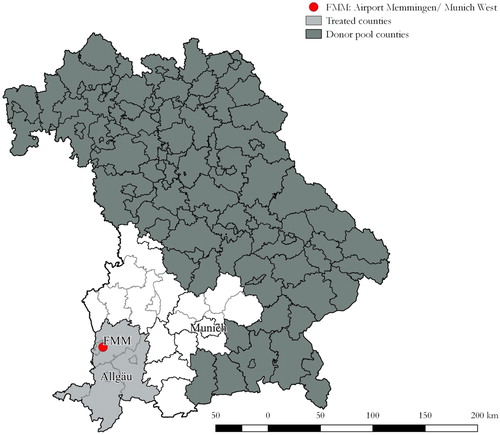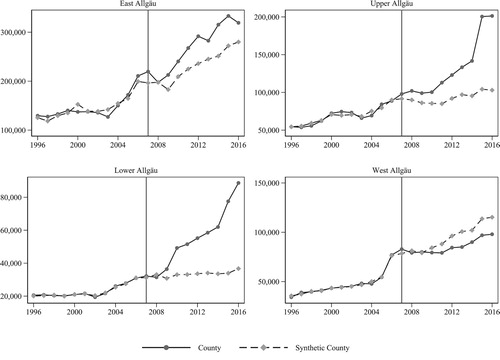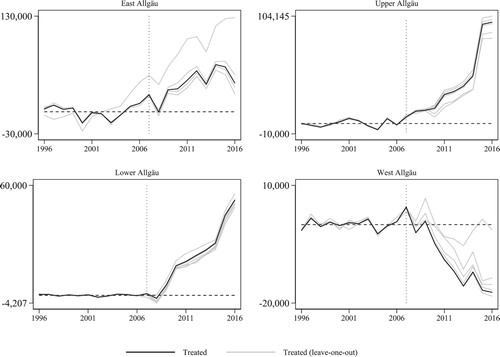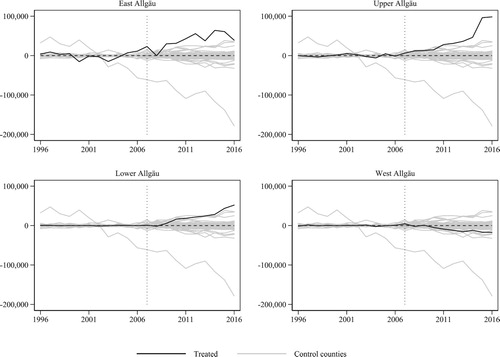Figures & data
Figure 1. Treatment and donor pool regions.
Note: Shown is the federal state of Bavaria with its touristic regions (black boundaries) and the Bavarian counties (grey boundaries). Light grey counties form the treatment region of Allgäu. Dark grey counties form the donor pool. White-shaded counties are not included because they are likely to be treated to some extent as well.

Figure 2. Synthetic control method, arrivals from abroad.
Note: Shown are arrivals from abroad in the four treated regions of East Allgäu, Upper Allgäu, Lower Allgäu and West Allgäu (dark grey), and in their synthetic counterparts (light grey). The donor pool consists of counties in Bavaria that were not treated. The vertical line in each graph marks the opening of Memmingen Airport in 2007.

Table 1. Difference-in-differences results using weighted least squares (WLS).
Figure 3. Robustness (I): leave-one-out.
Note: Shown is the gap of arrivals from abroad between the treated regions and their synthetic counterfactuals. The black line represents the gap for the four treated regions of East Allgäu, Upper Allgäu, Lower Allgäu and West Allgäu (baseline synthetic control estimate). The light grey lines represent estimates from repeated synthetic control analyses while iteratively leaving out one donor pool county. The vertical line in each graph marks the opening of Memmingen Airport in 2007.

Figure 4. Robustness (II): placebo test.
Note: Shown is the gap of arrivals from abroad between the treated regions and their synthetic counterfactuals. The black line shows the gap for the four treated regions of East Allgäu, Upper Allgäu, Lower Allgäu and West Allgäu. The light grey lines show 72 placebo gaps for each county in the donor pool. Nuremberg is omitted as an outlier, since it is the upper bound in guest arrivals of the donor pool counties. The vertical line in each graph marks the opening of Memmingen Airport in 2007.

